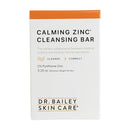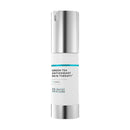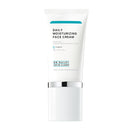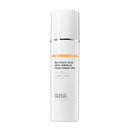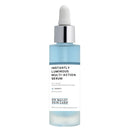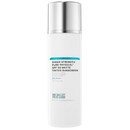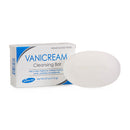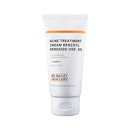Avoid the Worst Skin Care Chemicals for the Environment

What are the most notorious chemicals in your personal care products that are damaging the environment? Some of them are probably lurking in your bathroom cabinet, in your shower and on your vanity. Avoid the worst skin care chemicals for the environment this Earth Day. You can do it without sacrificing results.
Four of the least eco-friendly personal skin care products include those made with:
- synthetic fragrances,
- phthalates,
- antibacterial ingredients like triclosan, and
- chemical sunscreen filters and nanotechnology mineral sunscreens.
Avoid these 'notorious 4' and do yourself and the planet a big favor!
What are phthalates and why are phthalates bad for you and the environment?
Phthalates are sometimes used in an ingredient listed as 'fragrance'. They help scent linger and enhance performance.
Phthalates are known endocrine disruptors and linked to developmental and reproductive toxicity and cancer according to Campaign for Safe Cosmetics.
We know that phthalates are common and ubiquitous in modern life because they are commonly found in human urine samples.
Phthalates are notorious ingredients in body washes, shampoos and even home cleaning products. They wash off our skin and into wastewater treatment facilities where they are difficult to remove, and thus, enter the environment and then re-enter drinking water and the food chain.
Phthalates are banned from skin care and personal care products in the EU but we still allow them here in the US, and they are abundant! It means that we, the consumer, have to take intentional effort to avoid phthalate hormone disruptors. - Dermatologist Dr. Cynthia Bailey
How do you know if there are phthalates in your skin care products?
Don't expect them to be clearly listed on product labels. Yes, the FDA, which regulates cosmetic consumer products, requires ingredients be clearly listed. But, even according to the FDA:
.....the regulations do not require the listing of the individual fragrance ingredients; therefore, the consumer will not be able to determine from the ingredient declaration if phthalates are present in a fragrance… Consumers who do not want to purchase cosmetics containing DEP (the phthalate found in fragrance) may wish to choose products that do not include “Fragrance” in the ingredient listing. FDA
It's the ambiguous ingredient 'fragrance' where they often hide. Think about how many of your personal-care and home-cleaning products contain this vague ingredient. Most fragrance in your personal care products is artificial, and the components of this artificial fragrance are non-specifically delineated — you have no idea if that scent contains phthalates, and there is no way to tell. In my opinion, you just have to assume they might unless you know the exact source of that exact ingredient in that product.
All of my products specifically do NOT contain phthalates. Phthalates are bad, I make a point to source only phthalate-free ingredients and use chemists that don't use phthalates in their labs. - Dr. Bailey
What is the best way to avoid phthalates in your skin care and home cleaning products?
The best way to avoid phthalates is to avoid products with artificial fragrance. The double benefit is that fragrance is a big problem for skin allergy so avoiding it is smart! Only two of my products contain fragrance and it is phthalate-free hypoallergenic fragrance. All the rest are fragrance-free.
The best way to avoid phthalates in your skin care products is to use fragrance-free products when you don't know the source of the fragrance.
Chose fragrance-free products for your personal care. For example, my Natural Body Lotion and Natural Face and Body Butter are much better choice than a scented body lotion, in my opinion. If you want scent in your life, use a very low concentration of natural, essential oil for fragrance. Remember that essential oils can be skin allergens too so chose one scent that you love, and use it very sparingly in a very diluted amount. Add a drop to a large dollop of the Natural Lotion or Butter and you have DIY safe scented body moisturizer that you can trust.
What is the difference between fragrance-free and unscented skin care products?
- According to the EPA, “fragrance-free” means that the product has no fragrance ingredients added.
- Unscented products may contain masking chemicals to hide the odor of the product base formulation.
Choose fragrance-free products to entirely avoid fragrance chemicals that may include phthalates.
Make a commitment to do this for personal care products that you use a lot of such as your shower gel, bar soap and body moisturizers.
My certified organic fragrance-free Shower Gel is the shower gel my family uses.
My Naturally Best Bar Soap is also fragrance-free, economical and lasts a long time.
I even have a natural home spray cleaner that is guaranteed phthalate free while supplies last.
Triclosan is the other ingredient you should avoid.
Triclosan is an antibacterial ingredient in soaps, toothpaste, lotions, hand sanitizers and other personal care products. Even the FDA says to avoid it.
Animal studies suggest that triclosan lowers thyroid hormone levels and contributes to the bacterial antibiotic resistance problem. It also accumulates in aquatic ecosystems, is only partially removed by wastewater treatment, and is highly toxic to aquatic ecosystems. Never use triclosan.
Wear only non-nano particle mineral sunscreen with an emphasis on zinc oxide to avoid chemical sunscreen filters.
This is important for both you and the environment. Zinc oxide and titanium dioxide are the safest sunscreen ingredients and you should read your sunscreen labels to see what's really in them. In 2019 the FDA stated that they are the only two sunscreen ingredients that have adequate data to prove they are safe to consumers. According to the FDA, all the other sunscreen ingredients need more data before the FDA says they are OK.
You need to know that chemical sunscreens are absorbed into your body when you use them. A disturbing study published in the Journal of the American Medical Association shows that sunscreen chemical filters are readily absorbed into the human bloodstream under normal use. On a beach vacation, they accumulate within the first day and stay at high blood levels for 7 days. This new information is important and relevant to your immediate sun protection choices. These are not friendly chemicals. Some, such as oxybenzone, are known to be hormone disruptors.
With good mineral sunscreens available, there is no reason to use chemical sunscreens, in my opinion. - Skin Wellness Expert and Dermatologist Dr. Bailey
Marine ecosystems are also being damaged by chemical sunscreens and nanoparticle sunscreens.
Studies show that the sunscreen ingredient called oxybenzone and others are causing coral damage. Nanoparticle sunscreens are probably also causing harm to marine life, too. Use non-nano mineral sunscreens and good UPF 50 swim gear on your next beach, lake or river vacation.
My dermatologist's recommendations for sun protection include a heavy emphasis on UPF 50 clothing for most of your skin surface and application of sunscreen on the limited amount of exposed skin not cleverly covered. Add a hat and stay in the shade. NOAA agrees!
This Earth Day let's take good care of both ourselves and the Earth by avoiding skin care products with phthalate containing 'fragrance', triclosan, and chemical and nano-mineral sunscreens. - Dermatologist Dr. Cynthia Bailey

References:
Zota AR, Singla V, Adamkiewicz G, et alReducing chemical exposures at home: opportunities for action, J Epidemiol Community Health 2017;71:937-940.
Zakiya Hoyett (2018). Pharmaceuticals and Personal Care Products: Risks, Challenges, and Solutions, Risk Assessment, InTech, DOI: 10.5772/intechopen.70799. Available from: https://www.intechopen.com/books/risk-assessment/pharmaceuticals-and-personal-care-products-risks-challenges-and-solutions
Abel, P.D., Toxicity of synthetic detergents to fish and aquatic invertebrates., Journal of Fish Biology, Vol 6(3):279-298, May 1974 Paulsen, Lisa, "The Health Risks of Chemicals in Personal Care Products and Their Fate in the Environment" (2015). Chemistry Honors Papers. 15. http://digitalcommons.conncoll.edu/chemhp/15
Downs CA, Kramarsky-Winter E, Segal R, et al. Toxicopathological Effects of the Sunscreen UV Filter,Oxybenzone (Benzophenone-3), on Coral Planulae and Cultured Primary Cells and Its Environmental Contamination in Hawaii and the U.S. Virgin Islands. Arch Environ Contam Toxicol 2015 Oct 20. doi: 10.1007/s00244-015-0227-7.
Botta, Celine, et. al., TiO2-based nanoparticles released in water from commercialized sunscreens in a life-cycle perspective: Structures and quantities. Environmental Pollution, 159 (2011) 1543-1550
Corinaldest Cinzia, et. al., Sunscreen products impair the early developmental stages of the sea urchin Paracentrotus lividus, Nature Scientific Reports 7, Article number 7815 (2017)
Welch, Craig, Do Sunscreens’ Tiny Particles Harm Ocean Life in Big Ways? National Geographic, May 14, 2015
Dann, Ancrea, et. al., Triclosan: Environmental exposure, toxicity and mechanism of action, Journal of Applied Toxicology, 31(4): 285-311 May 2011


